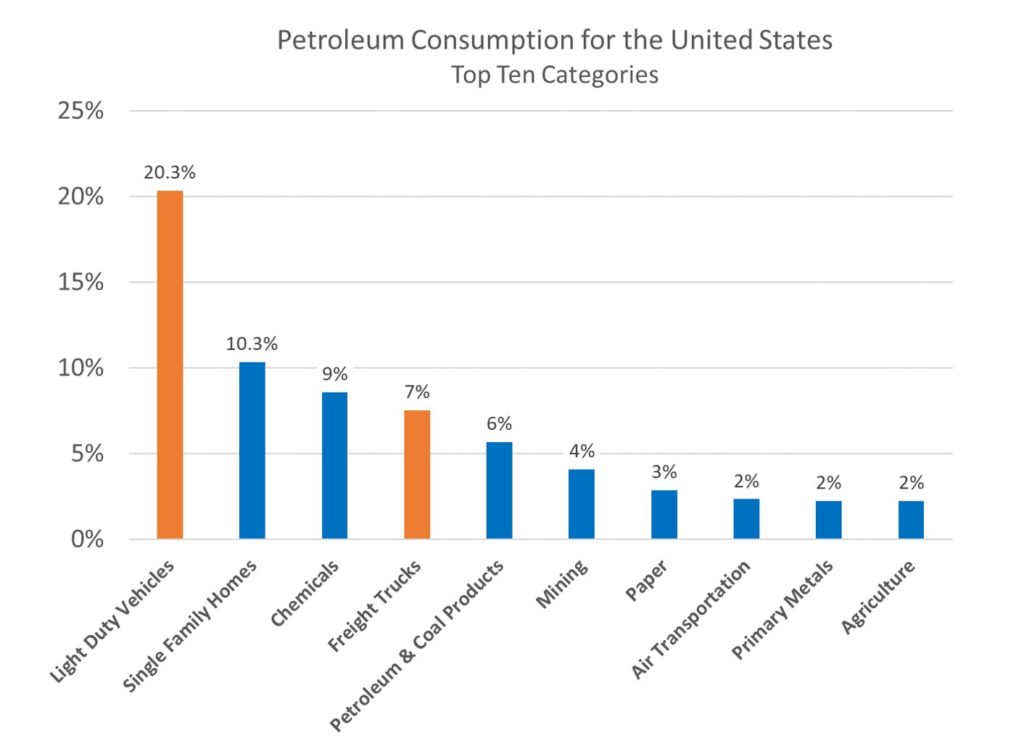Where is petroleum consumed?
 In last week’s post, I provided a chart that describes the sources of electricity for the United States. Coal is the largest source of electricity (38%) and natural gas is the next largest (25%). The largest non-carbon source is nuclear (22%) and the largest renewable sources are wind (6%) and solar (5%). The data from the chart came from Otherlab who was contracted by the Advanced Research Project Agency of the Department of Energy (ARPA-e) to review all available energy data sources and create an ultra-high resolution picture of the U.S. energy economy.
In last week’s post, I provided a chart that describes the sources of electricity for the United States. Coal is the largest source of electricity (38%) and natural gas is the next largest (25%). The largest non-carbon source is nuclear (22%) and the largest renewable sources are wind (6%) and solar (5%). The data from the chart came from Otherlab who was contracted by the Advanced Research Project Agency of the Department of Energy (ARPA-e) to review all available energy data sources and create an ultra-high resolution picture of the U.S. energy economy.
Using the same data set, I created a chart to break out the top ten categories for petroleum consumption for the United States.
The category Light-Duty Vehicles (cars, light trucks) is the largest consumer at 20% and is more than the sum of the next two categories – Single-Family Homes (10%) and Chemicals (9%).
When Light-Duty Vehicles at 20% are combined with Freight Trucks (think eighteen-wheelers) at 7%, they make up 27% of the country’s total consumption, making the Transportation sector the thirstiest. The most effective way to reduce petroleum consumption is to replace vehicles powered by internal combustion engines with electric vehicles (EVs). But there’s a catch.
As internal combustion engines diminish and EVs come online, petroleum consumption will drop and will help the planet. But, as EVs come online the demand for electricity will increase, making it even more important to replace coal and natural gas with zero-carbon sources of electricity: nuclear, hydro, wind and solar.
To save the planet, here’s what you can do. Vote for political candidates who will end federal subsidies for coal and natural gas. That single change will accelerate the adoption of wind and solar, as it will increase the existing cost advantage of wind and solar. And if that freed-up money can be reallocated to federally-funded R&D to improve the controllability of electrical grids, the change will come even sooner.
And at the state and local level, you can vote for candidates that want to make it easier for wind and solar projects to be funded.
And, lastly, you can buy an EV. You will see a much larger selection of new electric vehicles over the next year and the driving range continues to improve. Over the next year, most new EV models will be high performance and high cost, lower-cost EVs should follow soon after.
Image credit – NASA Goodard Flight Center

 Mike Shipulski
Mike Shipulski